
"Fast and quick for a busy family. We use our fireplace regularly now. Thank you."
Paulson Family (Windermere)

"Just when you need it Luxe is there to get you fired up! Best part of being in Alberta is the backyard fires."
Arnie Simms & Family (Riverbend)

"No fuss straight to us. No time anymore to piss around at the store. We have plenty of wood now."
Thomas Arnacker (Aspen Gardens)

"Yea this is great to have you come out and take care of our firewood while we relax!"
Mason Family (Rural Sherwood Park)

"We've got other priorities and businesses to run so it's nice to have a quality service like yours."
Rob Perloux (St. Albert)

"Fantastic guys and great service!
Convenient, good quality and delivery to my door which is awesome."
Heather (Westbrook Drive)

"Fast and quick for a busy family. We use our fireplace regularly now. Thank you."
Paulson Family (Windermere)

"Just when you need it Luxe is there to get you fired up! Best part of being in Alberta is the backyard fires."
Arnie Simms & Family (Riverbend)

"No fuss straight to us. No time anymore to piss around at the store. We have plenty of wood now."
Thomas Arnacker (Aspen Gardens)

"Yea this is great to have you come out and take care of our firewood while we relax."
Mason Family (Rural Sherwood Park)

"We've got other priorities and businesses to run so it's nice to have a quality service like yours."
Rob Perloux (St. Albert)

"Fantastic guys and great service!
Convenient, good quality and delivery to my door which is awesome."
Heather (Westbrook Drive)
Is Pine Good Firewood? Pros, Cons and Best Uses
Pine is a commonly used firewood known for its high sap and resin content. There's three common types which include white pine, jack pine and lodgepole pine.
White and jack pines are similar to spruce in how they burn, while lodgepole pine stands out with its denser structure and faster drying quality, resulting in a higher quality burn. This variety of pine firewoods provides significant heat output, with lodgepole pine in particular noted for its efficient burn and minimal popping.
While it's a popular choice, its suitability as firewood varies based on usage and available alternatives. Exploring the pros, cons, and best uses of pine as firewood will help you you decide if it's the right choice for your needs.
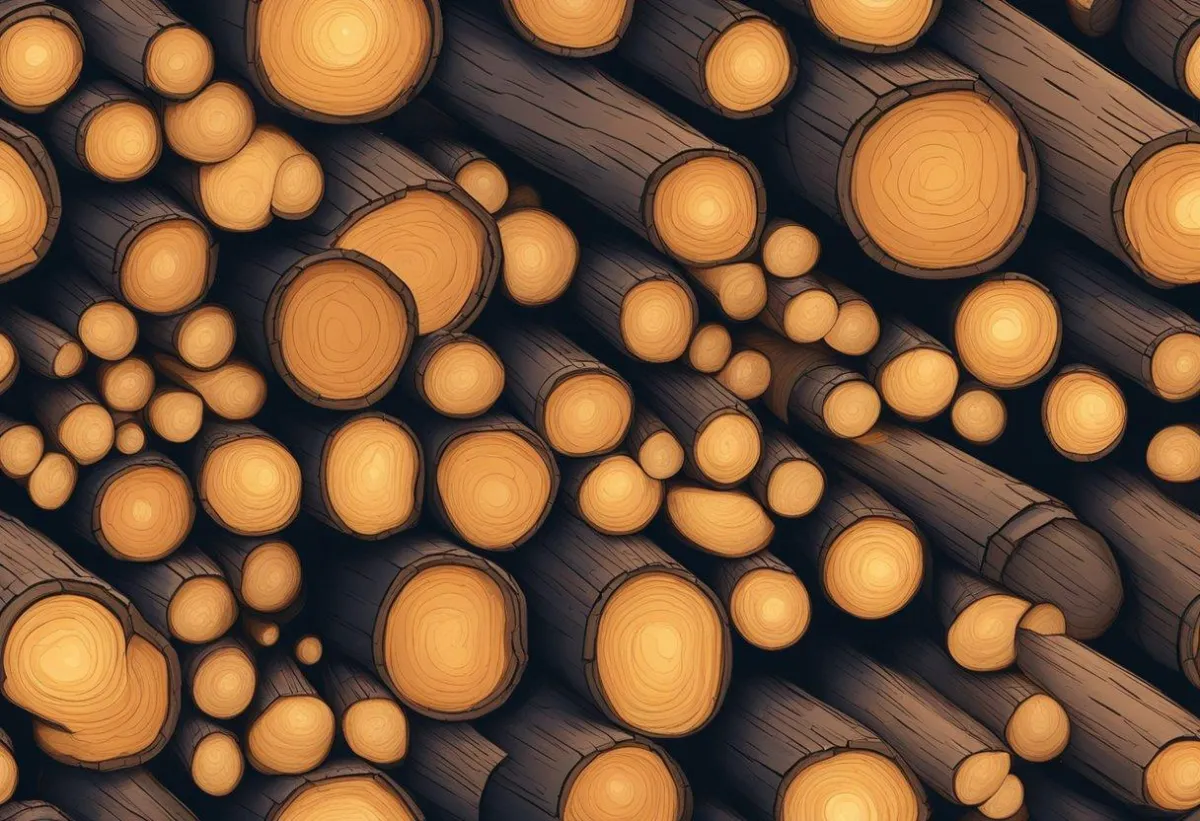
Pine is a softwood that burns easily, making it a popular choice for kindling. However, its high sap and resin content can cause it to burn quickly and create a lot of smoke. As a result, pine is not the best choice for indoor fires, as it can leave a sticky residue and produce a strong, unpleasant smell.
Key Takeaways
Pine is a softwood that burns easily and is good for kindling.
Pine is not the best choice for indoor fires due to its high sap and resin content.
Pine can be a good option for outdoor fires, but it should be used with caution and in moderation.
Characteristics of Pine as Firewood

Pine is a popular choice for firewood because it is readily available and easy to split. However, there are some important characteristics of pine as firewood that should be considered before using it as your primary fuel source.
Heat Production and BTU Ratings
Pine is a softwood, which means it burns faster and produces less heat than hardwoods. According to the USDA Forest Service, pine has a heat value of about 15.6 million BTUs per cord, which is lower than most hardwoods. This means that pine will burn faster and you will need to use more of it to achieve the same level of heat output.
Sap Content and Resin
Pine contains a high amount of sap and resin, which can cause issues when used as firewood. The sap can create a lot of smoke, and the resin can cause a buildup of creosote in your chimney. This buildup can be dangerous and increase the risk of a chimney fire. To minimize these risks, it is recommended to only use well-seasoned pine that has been allowed to dry for at least six months.
Smoke and Creosote Build-up
As mentioned earlier, pine produces a lot of smoke when burned. This can be a nuisance for people with respiratory issues or in areas with strict air quality regulations. Additionally, the high resin content of pine can cause a buildup of creosote in your chimney. Creosote is a tar-like substance that can ignite and cause a chimney fire. To minimize the risk of creosote buildup, it is recommended to have your chimney cleaned annually and to only burn well-seasoned pine.
In summary, pine is a popular choice for firewood because it is readily available and easy to split. However, it is important to consider the characteristics of pine as firewood before using it as your primary fuel source. Pine has a lower heat value than hardwoods, contains a high amount of sap and resin, and produces a lot of smoke. To minimize the risks associated with using pine as firewood, it is recommended to only use well-seasoned pine and to have your chimney cleaned annually.
Seasoning and Storage of Pine

Drying Process
When it comes to using pine as firewood, it is essential to ensure that the wood is properly seasoned. Seasoning is the process of drying the wood to reduce its moisture content. Pine needs to be seasoned properly to burn efficiently and produce less smoke.
To season pine, it is important to start with clean and dry logs. The logs should be cut to the desired length and split into manageable sizes. Once split, the logs should be stacked in rows, with enough space between them to allow for proper air circulation. This will help in the drying process, as it allows the wood to breathe and dry out evenly.
It is recommended to season pine for at least six months to a year. During this time, the wood should be kept in a dry and well-ventilated area, away from moisture and rain. The ideal moisture content of seasoned wood is around 20%, which can be measured using a moisture meter.
Storage Techniques
After the pine has been properly seasoned, it is important to store it correctly to maintain its quality. Storing the wood properly will help prevent it from getting damp or rotting, which can reduce its heating efficiency.
To store seasoned pine, it is recommended to stack it in a dry and well-ventilated area, away from moisture and rain. The wood should be stacked in rows, with enough space between them to allow for proper air circulation. It is also important to cover the woodpile with a tarp or other waterproof covering to protect it from rain and snow.
In summary, the key to using pine as firewood is to ensure that it is properly seasoned and stored. This will help the wood burn efficiently, produce less smoke, and maintain its heating efficiency. By following the proper seasoning and storage techniques, you can enjoy the warmth and comfort of a cozy fire all winter long.
Burning Pine in Different Settings
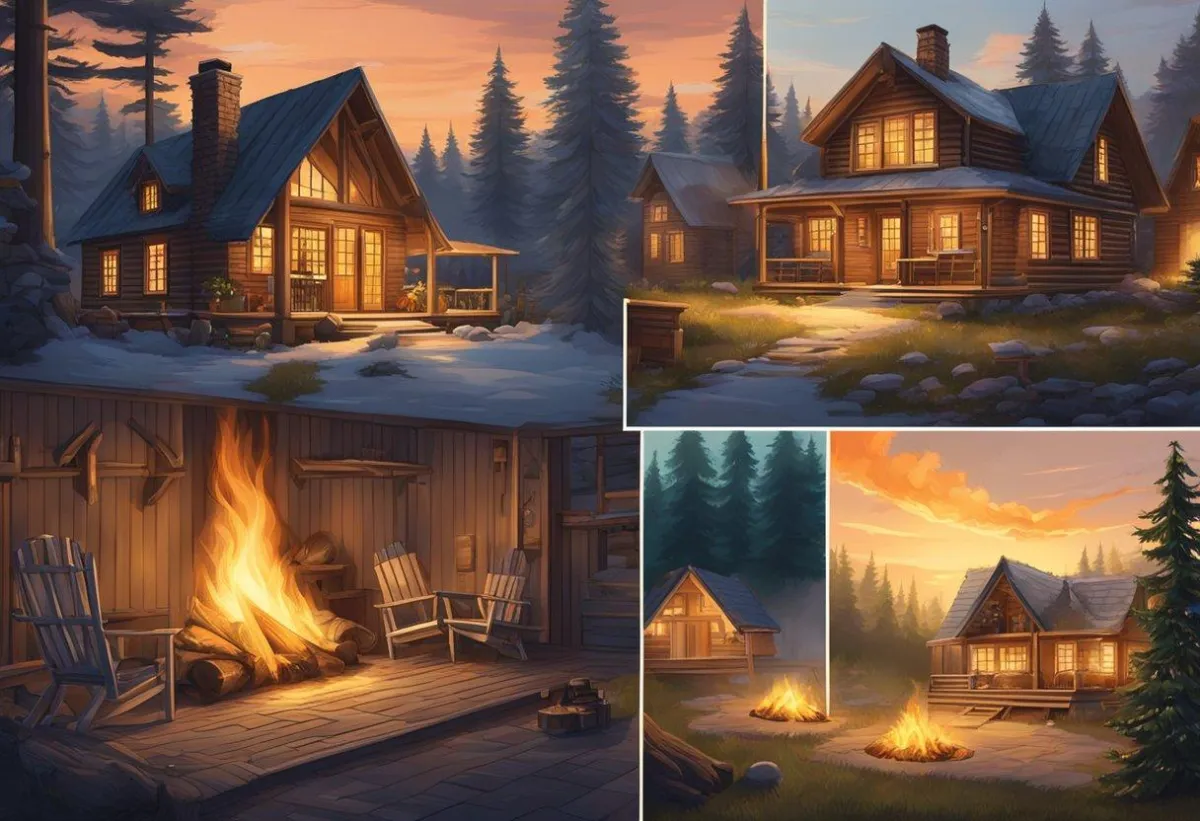
When it comes to burning pine, it's important to consider the setting in which it will be used. Pine can be a suitable firewood option for both indoor and outdoor use, but there are some factors to keep in mind.
Indoor Fireplaces and Stoves
Pine can be a good option for indoor fireplaces and stoves, but it's important to make sure it's properly seasoned and dried before burning. Pine has a higher sap content than other woods, which can lead to a buildup of creosote in the chimney. Creosote buildup can increase the risk of a chimney fire, so it's important to have the chimney cleaned regularly.
Another consideration when burning pine indoors is the smoke it produces. Pine has a high resin content, which can lead to heavy smoke production. This can be a concern for those with respiratory issues or allergies. However, if the pine is properly seasoned and dried, the smoke production can be reduced.
Outdoor Fire Pits and Campfires
Pine can be a good option for outdoor fire pits and campfires. It's easy to split and ignite, making it a convenient choice for outdoor use. However, it's important to keep in mind the smoke production and the potential for sparks.
When burning pine outdoors, it's important to keep a close eye on the fire and make sure it's fully extinguished before leaving. Pine can produce sparks, which can be a fire hazard if not properly contained.
Overall, pine can be a suitable firewood option for both indoor and outdoor use. However, it's important to take proper precautions and make sure it's properly seasoned and dried before burning.
Comparing Pine with Other Firewood
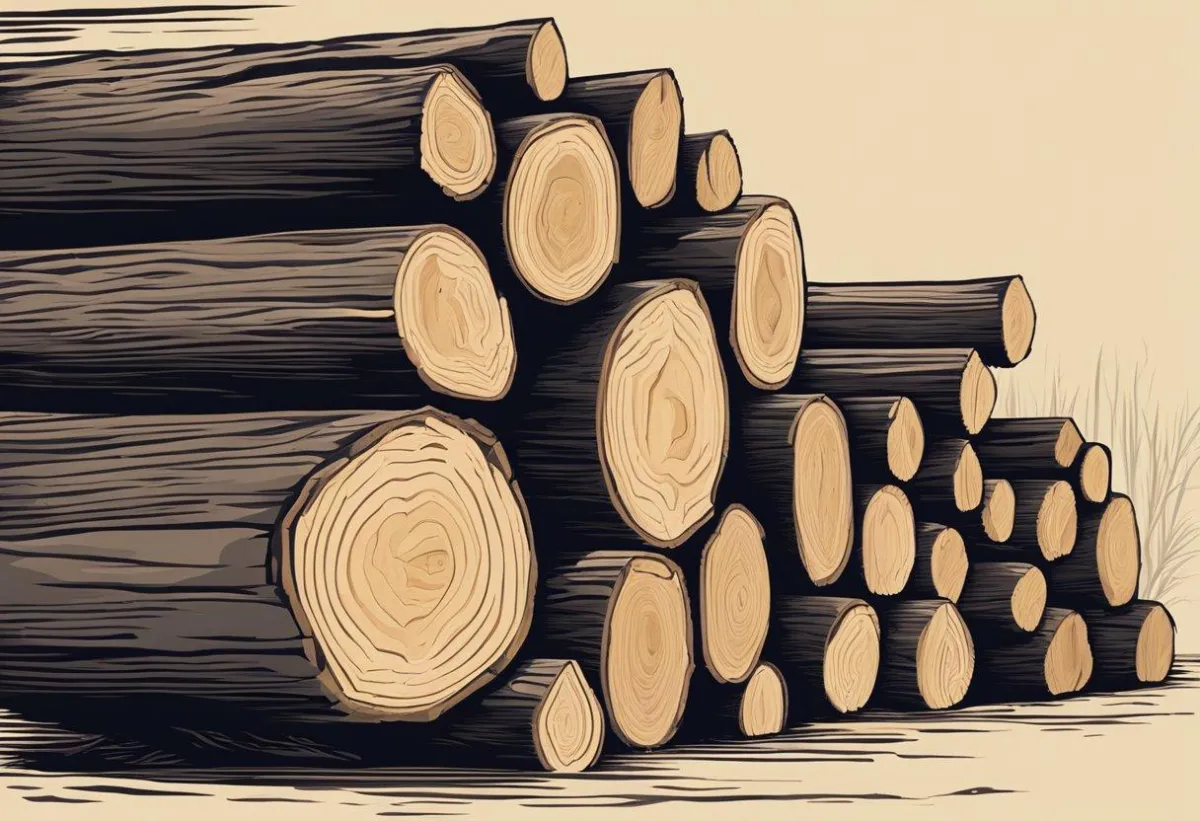
When it comes to choosing the best firewood for heating, pine is a popular choice for many homeowners. However, it's important to understand how it compares to other types of firewood in terms of quality and performance.
Pine vs Hardwoods
Pine wood is a softwood, while hardwoods like oak, ash, and maple are denser and burn longer. While pine is a good choice for kindling, it may not be the best option for long-term fires. Hardwoods tend to produce more heat and burn longer, making them a better choice for heating larger spaces.
Softwood and Hardwood Mix
Some homeowners prefer to use a mix of softwoods and hardwoods to achieve a balance of heat output and burn time. This can be a good option for those who want to use pine for kindling and mix it with hardwoods like oak or maple for longer fires.
Lodgepole Pine as a Superior Choice
One type of pine that stands out from the rest is lodgepole pine. This species of pine is known for its high density and low moisture content, making it an excellent choice for firewood. Lodgepole pine produces a lot of heat and burns longer than other types of pine, making it a superior choice for heating larger spaces.
Overall, pine wood can be a good choice for firewood, especially for kindling or short-term fires. However, for longer fires or heating larger spaces, hardwoods like oak or maple may be a better option. If you're set on using pine, consider using a mix of softwoods and hardwoods or choosing a denser species like lodgepole pine for optimal performance.
Environmental and Safety Considerations
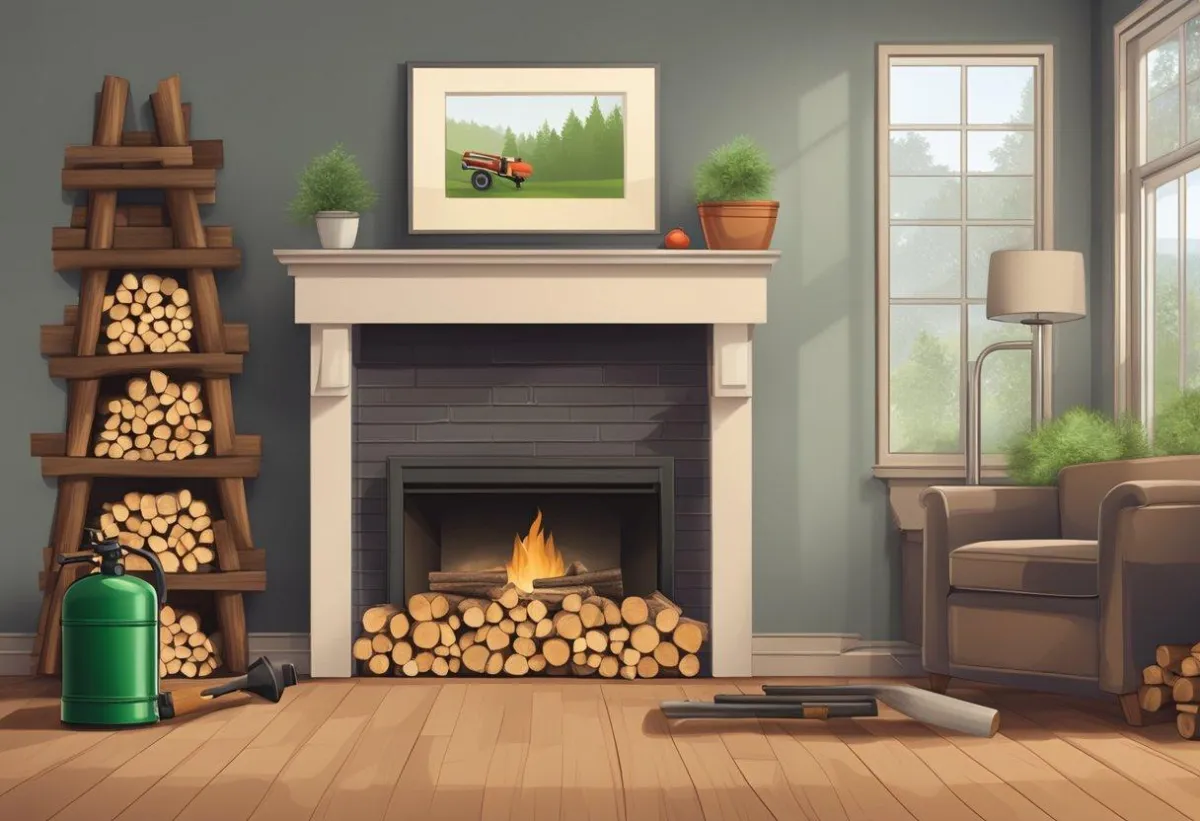
Fire Hazards
When considering using pine as firewood, it is important to keep in mind the potential fire hazards. Pine tends to produce more creosote buildup than other types of wood, which can increase the risk of chimney fires. Additionally, pine produces more sparks and embers than other types of wood, which can pose a hazard if not properly contained.
To reduce the risk of fire hazards, it is recommended to properly season the pine firewood before burning it. This means allowing the wood to dry out for at least 6 months or until the moisture content is below 20%. It is also important to use a well-maintained chimney and to regularly clean it to prevent creosote buildup.
Eco-Friendliness
Pine is a renewable resource and is widely available, making it an eco-friendly option for firewood. However, it is important to consider the environmental impact of harvesting and transporting the wood. It is recommended to purchase locally-sourced pine firewood to reduce the carbon footprint of transportation.
Additionally, burning wood can produce harmful fumes and contribute to air pollution. To reduce the environmental impact, it is recommended to use a high-efficiency wood stove or fireplace insert. These devices can help to reduce emissions and improve energy efficiency.
Overall, while pine can be a good option for firewood, it is important to consider the potential fire hazards and environmental impact. By properly seasoning the wood and using a well-maintained chimney, the risk of fire hazards can be reduced. Additionally, by using a high-efficiency wood stove or fireplace insert, the environmental impact can be minimized.
Frequently Asked Questions
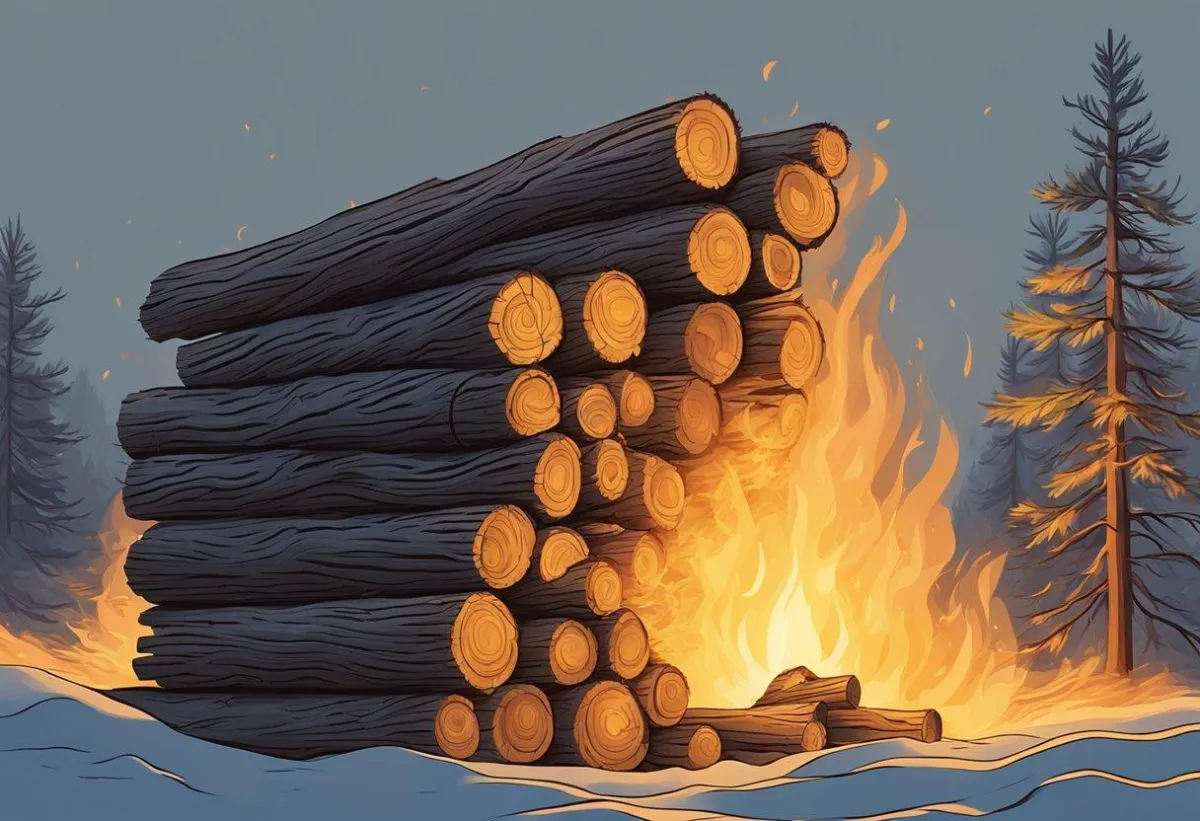
What are the benefits of using pine as firewood?
Pine is a readily available and inexpensive type of firewood. It is also easy to split and light, making it a popular choice for kindling. Pine wood produces a pleasant aroma when burned, which can add to the ambiance of a fire.
How does pine compare to oak and birch in terms of firewood quality?
In terms of heat output, pine is not as efficient as oak or birch. However, it is still a viable option for heating a home or cooking food. Pine has a lower BTU rating than oak and birch, but it is easier to ignite and produces less ash.
What precautions should be taken when burning pine in a fire pit?
When burning pine in a fire pit, it is important to keep the fire under control and not let it get too hot. Pine wood can produce a lot of creosote, which can build up in the chimney or flue and cause a fire hazard. It is also important to keep a close eye on the fire and make sure it is fully extinguished before leaving it unattended.
How long is the recommended drying period for pine before it is used for burning?
Pine should be seasoned for at least six months before it is used for burning. This allows the wood to dry out and reduces the amount of moisture in the wood. Burning wet or green wood can produce a lot of smoke and creosote, which can be hazardous.
What are the potential drawbacks of burning pine wood?
One potential drawback of burning pine wood is that it produces a lot of creosote, which can build up in the chimney or flue and cause a fire hazard. Pine wood also has a lower BTU rating than oak or birch, which means it produces less heat per unit of wood.
Which types of wood are considered unsafe or undesirable to burn?
Certain types of wood, such as pressure-treated wood, painted wood, or wood that has been treated with chemicals, should never be burned. These types of wood can release harmful toxins when burned, which can be hazardous to health. It is also important to avoid burning wood from certain tree species, such as poison ivy or poison oak, which can cause skin irritation or respiratory problems.
Monday - Saturday
1:00PM - 12:00AM (Midnight)
Sunday
CLOSED
2024© Luxe Logs. All Rights Reserved.
